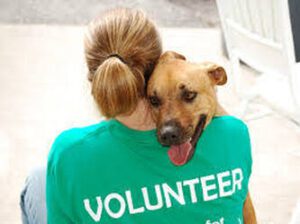Key Takeaways
-
Checkered Giant Rabbits need at least 4 hours of exercise daily to stay healthy and happy.
-
Provide a secure outdoor run or rabbit-proof indoor space for safe exercise.
-
Use toys and tunnels to stimulate both physical and mental activity.
-
Regular exercise prevents obesity, boredom, and destructive behavior.
-
Monitor your rabbit’s behavior to ensure they are getting enough exercise.
Checkered Giant Rabbit Exercise Tips
Introduction to Checkered Giant Rabbits
Checkered Giant Rabbits are a unique and engaging breed known for their large size and friendly personality. These rabbits can weigh between 11 to 16 pounds, making them one of the largest rabbit breeds. Because of their size and active nature, they require ample space and regular exercise to maintain their health and well-being.
As a first-time owner, it’s essential to understand the specific needs of Checkered Giant Rabbits. This guide will provide you with practical tips and advice to ensure your rabbit stays healthy, happy, and well-exercised.

“CHECKERED GIANT RABBIT. HOW TO TAKE …” from www.amazon.com and used with no modifications.
Importance of Exercise for Checkered Giant Rabbits
Exercise is crucial for Checkered Giant Rabbits for several reasons. Firstly, it helps prevent obesity, which is a common issue in larger rabbit breeds. Obesity can lead to various health problems, including heart disease and arthritis. Regular exercise keeps your rabbit’s weight in check and promotes overall physical health.
Besides that, exercise is vital for mental stimulation. Rabbits are intelligent animals that need mental challenges to stay engaged and happy. Without sufficient exercise, they can become bored and develop destructive behaviors such as chewing on furniture or digging up carpets.
Most importantly, exercise allows rabbits to express their natural behaviors. Hopping, running, and exploring are all essential activities that contribute to a rabbit’s overall well-being. Therefore, providing opportunities for exercise is not just beneficial but necessary for their health and happiness.
Creating a Safe Exercise Environment
Setting Up an Outdoor Play Area
If you have a garden or backyard, setting up an outdoor play area can be an excellent way to provide your Checkered Giant Rabbit with the exercise they need. The outdoor run should be secure and spacious, allowing your rabbit to explore freely without the risk of escape or predation.
-
Ensure the area is fenced and free from potential hazards like toxic plants or sharp objects.
-
Provide hiding spots and shelters to protect your rabbit from extreme weather conditions and predators.
-
Include toys, tunnels, and logs to keep your rabbit entertained and mentally stimulated.
Remember, always supervise your rabbit during outdoor playtime to ensure their safety.
Designing an Indoor Exercise Space
If outdoor space is not an option, you can create a rabbit-proof indoor exercise area. This space should be large enough to allow your rabbit to hop, run, and explore without restrictions. A dedicated room or a large playpen can work well for this purpose.
-
Remove any electrical cords, small objects, or other potential hazards from the area.
-
Provide soft flooring, such as rugs or mats, to protect your rabbit’s feet.
-
Include toys, tunnels, and climbing structures to encourage physical activity and mental stimulation.
An indoor exercise space can be just as effective as an outdoor run if set up correctly. The key is to ensure your rabbit has enough room to move around and plenty of interesting things to explore. If you’re considering a new pet, you might want to adopt a Britannia Petite Polish rabbit.
“Rabbits like to play and need plenty of exercise to stay healthy and happy. Ideally, you want to provide them with up to 4 hours daily of supervised time out of their cage.”
Interactive Play and Activities
Toys that Stimulate Physical Activity
Providing the right toys can make a significant difference in your rabbit’s exercise routine. Toys that encourage physical activity are essential for keeping your Checkered Giant Rabbit active and engaged.
-
Chew toys: These help keep your rabbit’s teeth healthy and provide a fun way to exercise their jaw muscles.
-
Tunnels: Tunnels mimic the natural burrows rabbits would use in the wild, encouraging them to run through and explore.
-
Climbing structures: Platforms and ramps can provide an excellent way for your rabbit to exercise and satisfy their curiosity.
Rotating toys regularly can also help keep your rabbit interested and prevent boredom. For more tips on rabbit care, you might want to check out this guide on adopting an American Chinchilla rabbit.
Games and Activities for Mental Stimulation
In addition to physical exercise, mental stimulation is crucial for your rabbit’s well-being. Engaging your rabbit in interactive games and activities can help keep their mind sharp and prevent destructive behaviors. For more tips on caring for your rabbit, visit the Rabbit Welfare Association and Fund.
-
Hide and seek: Hide treats around the play area and encourage your rabbit to find them. This activity stimulates their natural foraging instincts.
-
Training sessions: Teach your rabbit simple tricks or commands using positive reinforcement. This can be a fun way to bond with your pet while providing mental stimulation.
-
Puzzle toys: Toys that require your rabbit to solve a puzzle to get a treat can provide hours of entertainment and mental exercise.
Combining physical and mental activities will ensure your Checkered Giant Rabbit remains happy, healthy, and well-exercised.
Creating a daily exercise routine for your Checkered Giant Rabbit can make a world of difference in their overall health and happiness. Regular exercise helps maintain a healthy weight, promotes mental stimulation, and allows your rabbit to express natural behaviors. Here are some tips to help you create an effective daily exercise plan for your furry friend.
Sample Daily Exercise Plan
Having a structured exercise plan can ensure your Checkered Giant Rabbit gets the activity they need. Here’s a sample daily exercise plan that you can adjust based on your rabbit’s individual needs:
-
Morning: Allow your rabbit to explore their outdoor run or indoor exercise space for at least two hours. Provide toys, tunnels, and climbing structures to keep them engaged.
-
Afternoon: Engage your rabbit in interactive play sessions, such as hide and seek or training sessions. Use treats and positive reinforcement to encourage participation.
-
Evening: Provide another two hours of free exploration time in their exercise area. Rotate toys and add new items to keep the environment interesting.
This plan ensures your rabbit gets at least four hours of exercise daily, split into manageable sessions throughout the day. Learn more about adopting a rabbit to give them a loving home.
Adjusting Exercise Based on Age and Health
It’s essential to tailor your rabbit’s exercise routine based on their age and health status. Younger rabbits tend to be more energetic and may require more playtime, while older rabbits might need gentler activities. Here are some considerations for adjusting your rabbit’s exercise routine:
|
Age/Health |
Exercise Recommendations |
|---|---|
|
Young (under 1 year) |
Provide ample playtime with a variety of toys and activities. Ensure they have space to run, hop, and explore. |
|
Adult (1-5 years) |
Maintain a balanced exercise routine with a mix of physical and mental activities. Monitor their weight and adjust exercise as needed. |
|
Senior (5+ years) |
Focus on gentle activities that promote movement without causing strain. Ensure they have a comfortable resting area. |
|
Health Issues |
Consult with a veterinarian to create a tailored exercise plan that accommodates their specific health needs. |
Adjusting the exercise routine based on age and health ensures that your rabbit stays active without overexerting themselves. For more information, you can read about Britannia Petite Polish rabbits and their care.
Monitoring and Encouraging Healthy Behavior
Recognizing Signs of Sufficient Exercise
It’s important to monitor your rabbit’s behavior to ensure they are getting enough exercise. Here are some signs that indicate your rabbit is well-exercised: adopt American Chinchilla rabbit breed.
-
Healthy Weight: Your rabbit maintains a healthy weight and doesn’t show signs of obesity.
-
Active and Alert: Your rabbit is active, alert, and curious about their surroundings.
-
Good Appetite: Your rabbit has a healthy appetite and eats their food without issues.
-
Normal Behavior: Your rabbit exhibits normal behaviors such as grooming, exploring, and interacting with their environment.
If you notice any changes in your rabbit’s behavior, it may be a sign that they need more exercise or a different type of activity. For more information on adopting rabbits, you can visit our guide on American Chinchilla Rabbit adoption.
Addressing Exercise-Related Behavior Issues
Sometimes, rabbits may develop behavior issues related to their exercise routine. For more information on caring for these large breeds, visit the Rabbit Welfare Association and Fund. Here are some common issues and how to address them:
-
Destructive Chewing: If your rabbit starts chewing on furniture or other household items, it may be a sign of boredom. Provide more toys and rotate them regularly to keep your rabbit engaged.
-
Digging: Excessive digging can indicate a need for more mental stimulation. Introduce puzzle toys and interactive games to keep your rabbit’s mind occupied.
-
Aggression: If your rabbit becomes aggressive, it may be due to a lack of exercise or socialization. Ensure they have enough playtime and consider introducing them to other rabbits for companionship.
Addressing these behavior issues promptly can help maintain a healthy and happy environment for your rabbit.
Benefits of Regular Exercise for Checkered Giant Rabbits
Physical Health Benefits
Regular exercise offers numerous physical health benefits for your Checkered Giant Rabbit:
-
Weight Management: Exercise helps maintain a healthy weight and prevents obesity-related health issues.
-
Cardiovascular Health: Physical activity promotes a healthy heart and improves overall cardiovascular function.
-
Muscle Tone: Exercise helps build and maintain strong muscles, supporting your rabbit’s large frame.
-
Bone Health: Regular movement strengthens bones and helps prevent conditions like arthritis.
These physical health benefits contribute to a longer, healthier life for your rabbit. If you’re considering another pet, you might want to learn about adopting a Britannia Petite rabbit.
Mental Well-being and Behavior Improvements
In addition to physical health, regular exercise also supports your rabbit’s mental well-being:
-
Reduced Boredom: Exercise and interactive play prevent boredom and reduce the risk of destructive behaviors.
-
Enhanced Socialization: Regular playtime helps your rabbit become more comfortable with human interaction and other rabbits.
-
Stress Relief: Physical activity helps release pent-up energy and reduces stress levels.
-
Improved Mood: Engaging in fun activities and exploring their environment can improve your rabbit’s overall mood and happiness.
Ensuring your rabbit gets enough exercise can lead to a happier and more well-adjusted pet. For more information on adopting different pets, check out this guide on Abyssinian Guinea Pig adoption.
Common Mistakes and How to Avoid Them
Overfeeding and Lack of Activity
One common mistake first-time rabbit owners make is overfeeding their pets while not providing enough exercise. This can lead to obesity and related health issues. To avoid this, ensure you are feeding your rabbit a balanced diet and providing ample opportunities for physical activity.
Here are some tips to prevent overfeeding and encourage activity: make sure to provide a balanced diet and create a stimulating environment. If you’re considering expanding your pet family, you might want to adopt an American Chinchilla rabbit for companionship.
-
Measure your rabbit’s food portions and avoid giving too many treats.
-
Provide a variety of vegetables and high-quality hay to support a balanced diet.
-
Ensure your rabbit has at least four hours of exercise daily, split into multiple sessions.
Maintaining a balance between diet and exercise is crucial for your rabbit’s health.
Ignoring Safety Considerations
Another common mistake is not taking proper safety measures when setting up an exercise area. This can result in injuries or escape attempts. Always ensure that your rabbit’s play area is secure and free from hazards.
Here are some safety tips:
-
Regularly enclosures for any gaps or weaknesses.
-
Remove any sharp objects or toxic plants from the play area.
-
Supervise your rabbit during playtime.
-
Avoid outdoor exposure due to potential threats from predators and disease.
By taking these precautions, you can create a safe environment where your rabbit can exercise and explore without risk.
Frequently Asked Questions
Here are some common questions first-time Checkered Giant Rabbit owners might have regarding exercise needs and routines.
How much exercise does my Checkered Giant Rabbit need daily?
Your Checkered Giant Rabbit needs at least four hours of exercise daily. This can be split into multiple sessions throughout the day to ensure they remain active and engaged.
Regular exercise helps maintain a healthy weight, promotes cardiovascular health, and keeps your rabbit mentally stimulated. Make sure to provide a mix of physical and mental activities to keep your rabbit happy and healthy.
Always monitor your rabbit’s behavior and adjust their exercise routine as needed to meet their individual needs. For more information on rabbit care, you can read about the American Chinchilla Rabbit breed.
What are some signs that my rabbit is not getting enough exercise?
-
Weight gain or obesity
-
Destructive behaviors such as chewing on furniture or digging
-
Lethargy or lack of interest in their surroundings
-
Reduced appetite or changes in eating habits
If you notice any of these signs, it may be time to increase your rabbit’s exercise and provide more engaging activities.
Ensure they have enough space to move around and plenty of toys and tunnels to explore. Regularly rotating toys and introducing new activities can help keep your rabbit interested and active.
Consult with a veterinarian if you have concerns about your rabbit’s health or behavior.
Is it Safe for Checkered Giant Rabbits to exercise outside?
Not really due to potential risks of harm from predators and disease.
How do I ensure my rabbit’s play area is safe?
To ensure your rabbit’s play area is safe, follow these steps:
-
Regularly inspect play pen, rooms and enclosures for gaps or weaknesses and rabbit-proof your home.
-
Remove any sharp objects or toxic plants from the area.
-
Provide soft flooring, such as rugs or mats, to protect your rabbit’s feet.
-
Include hiding spots and shelters to offer protection from extreme weather and predators.
By taking these precautions, you can create a safe and secure environment where your rabbit can exercise and explore without risk.
Ensuring your Checkered Giant Rabbit gets enough exercise is crucial for their overall health and happiness. By providing a safe and stimulating environment, you can help your rabbit stay active, engaged, and well-exercised. For more tips on caring for different rabbit breeds, check out our guide on adopting Britannia Petite and Polish rabbits.
Remember to monitor your rabbit’s behavior and adjust their exercise routine as needed. With proper care and attention, your Checkered Giant Rabbit will thrive and enjoy a long, healthy life.
Happy exercising!


